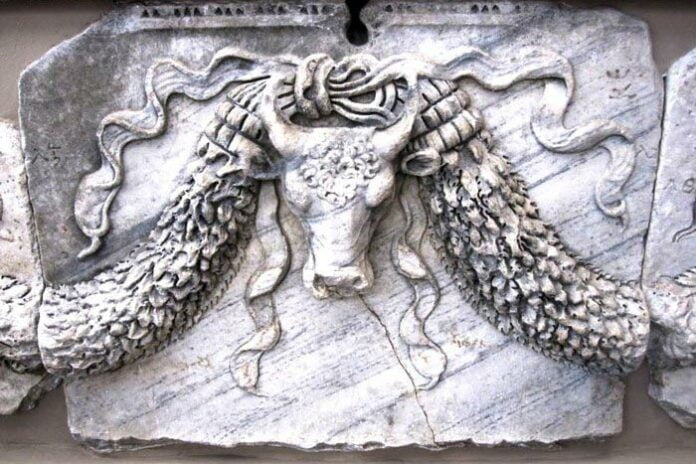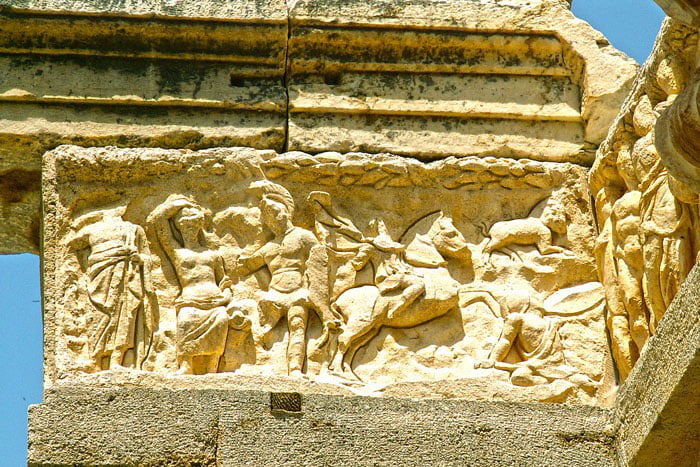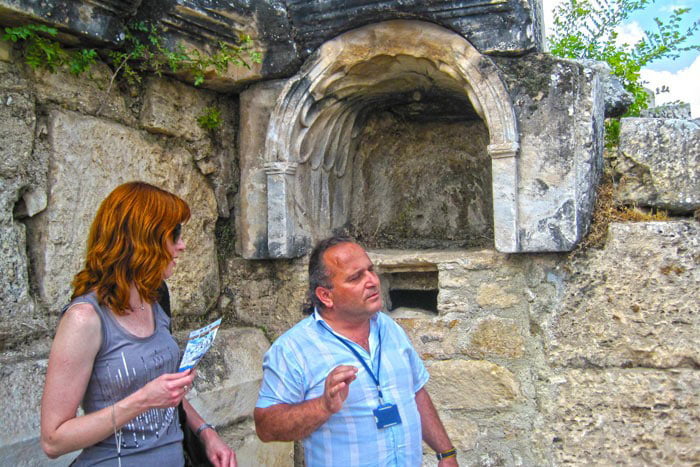Guided Tour Ephesus – Discover the Legendary City of Asia Minor
The Founding Legends of Ephesus
According to legend, Ephesus was founded by the Amazons—famous women warriors of ancient times. The city’s name may come from “Apasas,” which means “city of the Mother Goddess” in the Arzawa Kingdom.
Many scholars believe Ephesus was linked to goddess worship. The double-axe symbol called the labrys, often linked to the goddess, may have first appeared here.
Ephesus was inhabited since the late Bronze Age. However, rulers and natural disasters often caused the city to relocate. Early settlers included the Carians and Lelegians.
In 1200 BCE, Ionian Greeks arrived. Ephesus then became known mainly as an Ionian Greek city. Explore the city’s origins with our walking tours Ephesus.
Greek Ephesus and the Rise of a Great City
Ephesus was refounded by Androclus, the son of Athenian king Codrus. After the Ionian migration, several cities joined under Ephesus’ leadership.
The city suffered destruction during the Cimmerian invasion in the 7th century BCE. Under the Lydian kings, however, it became rich and powerful.
Ephesus was a center of learning and home to the philosopher Heraclitus. Women in Ephesus had equal rights. Records mention female painters, teachers, and sculptors.
At night, the city’s streets were lit by oil lamps, showing its luxury. During King Croesus’ reign, construction of the great Temple of Artemis began.
This temple was one of the Seven Wonders of the Ancient World. It burned down in 356 BCE—the same night Alexander the Great was born.
Though Persia conquered the region, Ephesus continued to grow. During the Ionian Revolt in the 5th century BCE, Ephesus stayed neutral. Because of that, it avoided destruction. Experience its beauty with our daily Ephesus tours.
Hellenistic Ephesus and Major Changes
Alexander the Great freed Ephesus from Persian rule in 334 BCE. When he saw the unfinished Temple of Artemis, he offered to fund its completion.
However, the people of Ephesus declined his offer. They said it was not proper for one god to build a temple for another.
After Alexander’s death, his general Lysimachus took control. He renamed the city Arsineia after his wife, Arsinoe. He also made several improvements.
Lysimachus built new city walls and moved the city southwest. He even built a harbor. But people didn’t want to leave their old homes.
To force them, he blocked the sewage system before a storm. The flooding made old houses unlivable, and the citizens were forced to move.
In 281 BCE, the city returned to its original name—Ephesus. It again became a powerful commercial port in the Mediterranean.
Ephesus Under Roman Rule
In 129 BCE, the Roman Empire inherited Ephesus after King Attalos of Pergamon died. Ephesus then became part of the Roman world.
High taxes led to rebellion. In 88 BCE, Mithridates invaded, and many Roman citizens were killed. Later, Roman general Sulla retook the city.
A powerful earthquake struck Ephesus in 17 CE. Yet the city recovered and became a vital center for trade and learning again.
The Celsus Library was built, showing the city’s wealth and love of knowledge. Ephesus also became a center for politics and education.
Historians like Aristio praised the city’s importance. The second major philosophy school of the Aegean was established here.
Join our guided tour Ephesus to learn more about this vibrant Roman city.
Christianity and the Rise of New Beliefs
Ephesus became important in the early days of Christianity. Saint Paul visited the city and preached here. He was even booed in the theater.
Mary, the mother of Jesus, is said to have lived here with Saint John. You can still visit their resting places today.
Paul’s letter to the Ephesians in the Bible was written to the Christian community in Ephesus. The city became a holy place.
One popular legend is the Cave of the Seven Sleepers. Seven young Christian men hid in a cave during pagan rule.
They were sealed in but woke up 200 years later, after Christianity had spread. People believed their story proved the truth of resurrection.
If you want to explore biblical Ephesus, don’t hesitate to contact us and plan your custom tour.
Late Antiquity and the Decline of Ephesus
As Christianity became the official religion, changes followed. Emperor Theodosius ordered all pagan temples and schools to close.
Women lost many of the rights they had enjoyed before. They could no longer work freely or teach in public.
Worship of the goddess Artemis was banned. The great Temple of Artemis was destroyed by Christian mobs. Its stones were used to build churches.
Streets that were once bright and clean began to fall apart. Public buildings lost importance as focus turned to spiritual life.
People began preparing for the Second Coming of Jesus. The city, once a beacon of art and science, became quiet and deeply religious.
Take a guided tour Ephesus to witness how one of the world’s greatest cities changed through history.
Walk the Ancient Roads of Ephesus
Ephesus is more than just ruins. It is a living museum filled with history, culture, and timeless stories. From goddesses to Christian saints, the city has seen it all.
Its roads once echoed with the steps of kings, traders, and philosophers. Today, they welcome curious travelers and history lovers.
Whether you’re interested in mythology, Roman history, or Christian heritage, Ephesus has something special for you.
Explore this magnificent site through walking tours Ephesus. You can also join daily Ephesus tours for an expert-led visit.
For questions or to create a custom experience, contact us anytime. Let’s walk the paths of history together.




